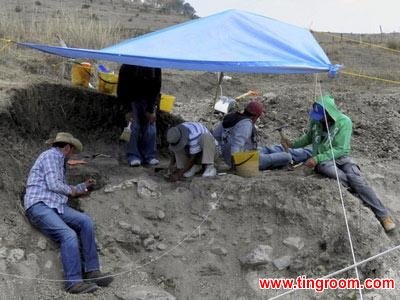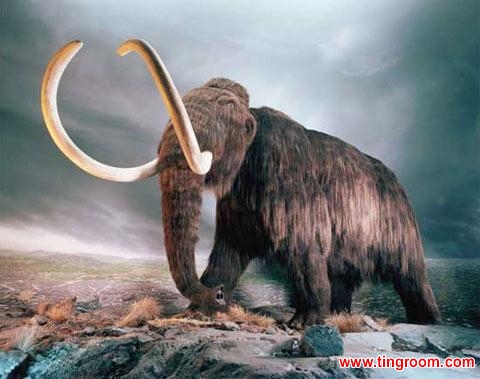英语新闻视频:墨西哥克雷塔罗州发现猛犸象牙化石
(单词翻译:单击)
A team of investigators1 in the central Mexican state of Queretaro has uncovered the remains2 of an ancient mammoth3 over 10 thousand years old.
The bones were found in Huimilpan municipality and include tusks4, skull5 fragments and other pieces still to be identified.
Anthropologists worked tirelessly at the excavation7 site, carefully brushing away dirt and debris8 to reveal the astonishing discovery. With this rare find, scholars are optimistic about unearthing9 more ancient remains.
Archaeologist Fiorella Finoglio Limon says, "There are some fragments which are in a very bad state, but there are others in very good condition. It's about 10 to 15 thousand years old, it's a very important discovery for Mexico because it's very easily destroyed or lost, and with these animal remains excavated10, we can explore the history of who had these animals and when they inhabited this region."

The remains of a mammoth that lived as much as 15,000 years ago
have been found in Mexico.
The mammoth was discovered in an area that was recently eroded11 by a flood. The archaeologists are currently working to get rid of dampness in the remains before working on restoring them.

File Photo: mammoth
The central Mexican state has revealed some prized ancient discoveries in recent years, but much of the local population is unaware12 of the ancient treasures buried beneath them.
Anthropologist6 Israel Lara Barajas says, "We have put up posters with information on the projects that the National Institute of Anthropology13 and History is doing, and how they are doing it, where we are located. We try to raise awareness14 in the local community about the cultural heritage, archaeology15, and palaeontology in the state of Queretaro. "
Now, the mammoth's 1.8 meters tusks are being carefully worked on by anthropologists in Queretaro, where officials eventually hope to put the ancient remains on public display at a local museum.
新闻快讯:这些猛犸象遗骸化石被发现于墨西哥克雷塔罗州维米尔潘地区的郊外。当地前段时间爆发的洪水让这些化石露出了地表,其中包括猛犸象的象牙化石、头骨化石,以及一些尚未确定的骨骼化石。据墨西哥国家人类学与历史研究所考证,这些化石均属于一头猛犸象,这头猛犸象生活于1万多年前的远古时代。这些猛犸象遗骸化石的清理工作眼下正在紧张进行当中。截至目前,两块长1.8米的象牙化石已经清理完毕,并被送往克雷塔罗州首府克雷塔罗的一家博物馆向公众展出。
 收听单词发音
收听单词发音 



